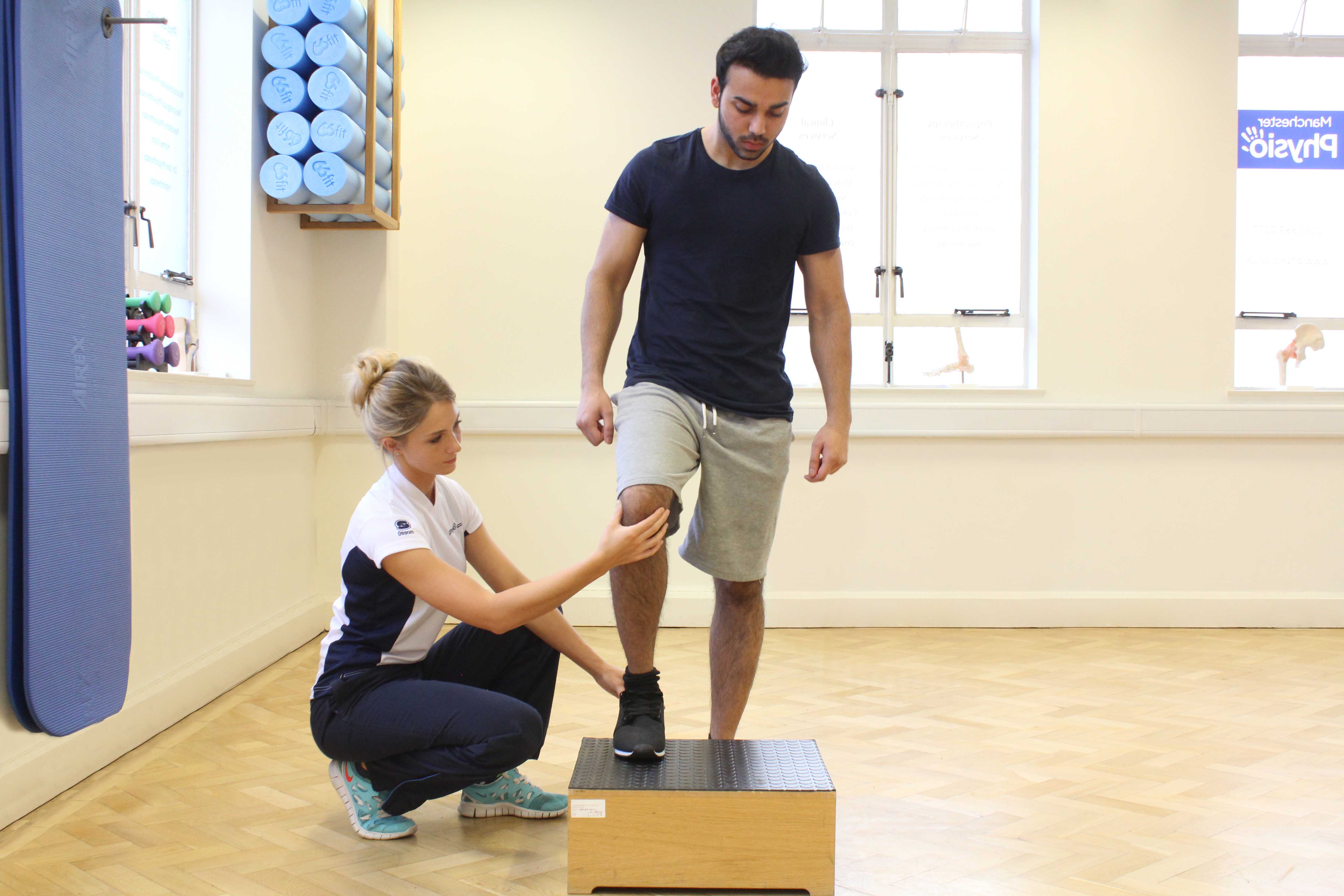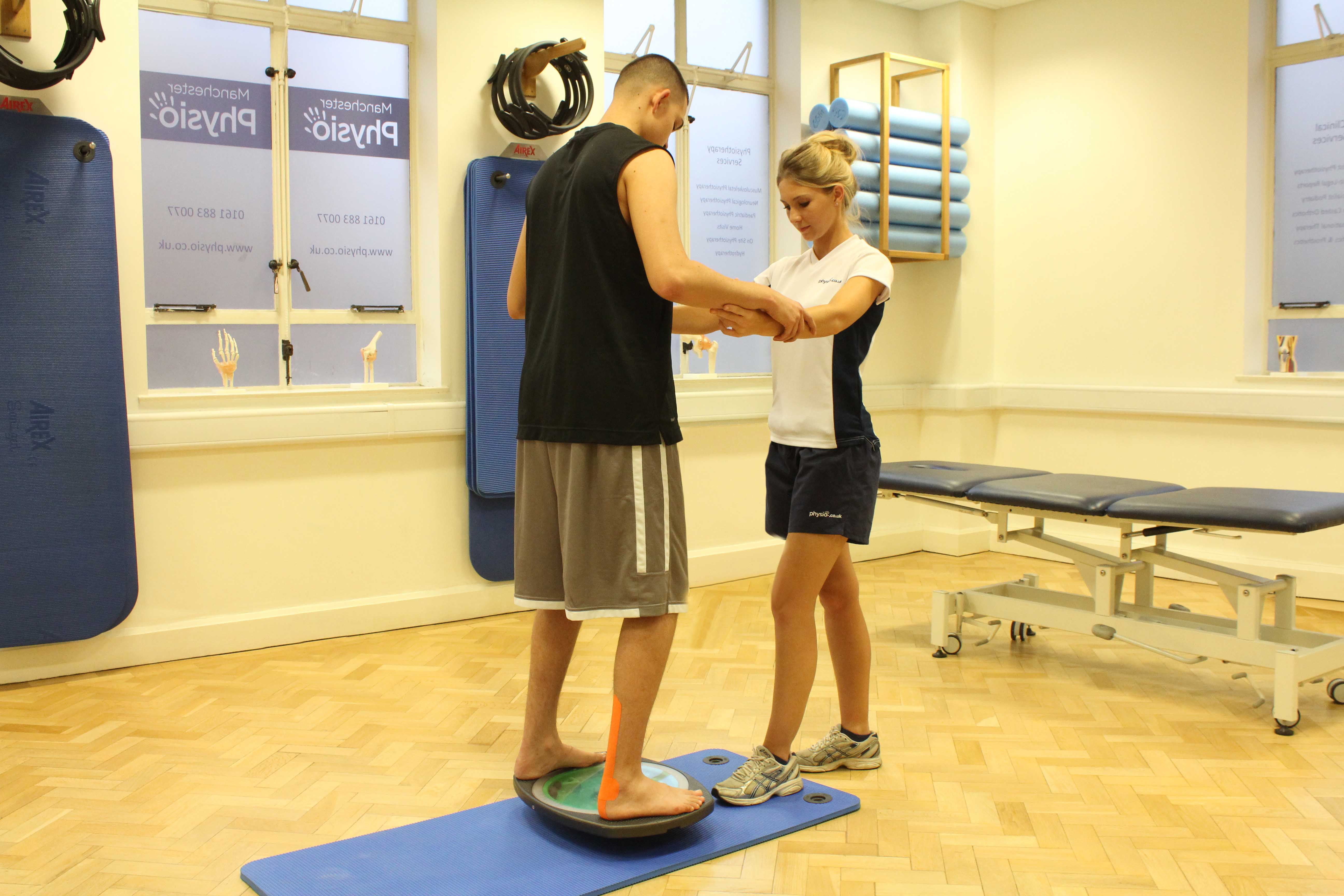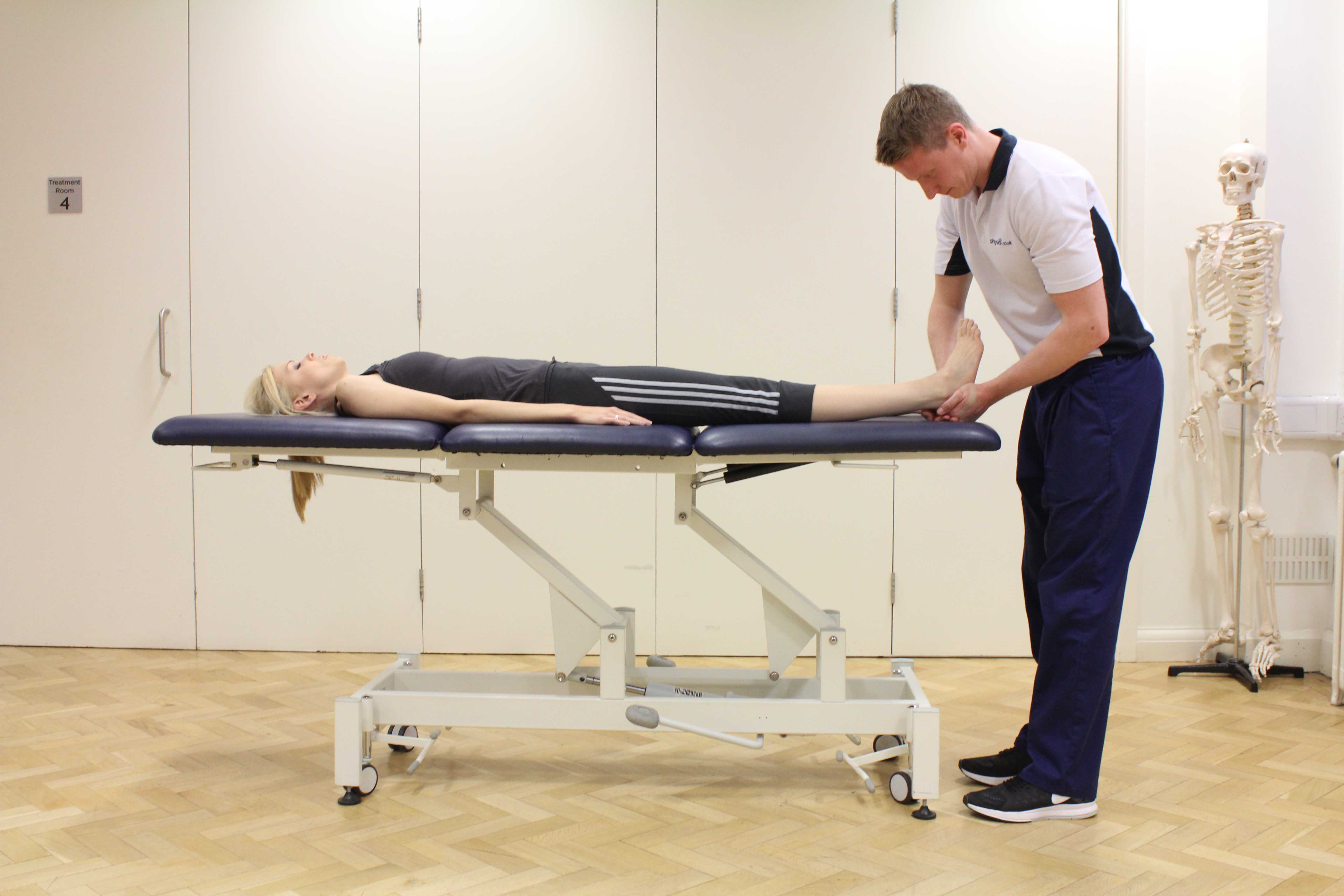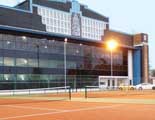Ankle ligament reconstruction
A ligament is a soft tissue that connects bone to bone. Ligaments help to provide stability to a joint and can limit or prevent certain movements to minimise the risk of injury. There are four main ligaments of the ankle joint:
- Anterior talofibular ligament (ATFL) which connects the small leg bone (fibula) to the wedge shaped bone on the front of the foot (talus)
- Calcaneofibular ligament (CFL) which connects the heel bone (calcaneus) to the fibula
- Posterior talofibular ligament (PTFL) which connects the fibula to the back of the talus
- Deltoid ligament which connects the tip of the shin bone (tibia) and extends to the calcaneus, talus and a small foot bone (navicular).
When a ligament is damaged it is known as a sprain. This can be done by twisting the ankle, a fall, a sudden trauma such as a kick to the ankle or it may occur if the ankle is already unstable from a previous injury. The most frequently injured ligament is the ATFL which is considerably weaker than the others. This ligament is damaged when the position of the foot and ankle points forward (plantarflexion) and slightly inwards (inversion). This movement stretches the ATFL ligament and therefore makes it more vulnerable to injury. Symptoms of an ankle sprain include:
- Pain which will increase if you continue to weight bear on the ankle. You will usually be able to pinpoint the area of pain.
- Swelling around the ligament area
- Bruising may take several hours or sometimes days to appear
- You will be able to weight bear or at least put some weight through the ankle which would not be possible if you had experienced a fracture
- Reduced muscle strength and range of movement
- Joint stiffness
- You may feel your ankle ‘give way’ if it is a severe sprain as the ligament will no longer be doing its role of stabilising the joint
- Grade 1 sprain: only a few fibres are damaged but you still have normal range of movement and strength. You may experience some pain or discomfort but you should usually be able to carry on with sport or normal activity.
- Grade 2 sprain: a large number of fibres are torn and there is some instability of the joint. There is considerably more pain from this injury.
- Grade 3 sprain: this involves a complete tear of the ligament and the joint is completely unstable. There will be reduced strength but may be increased range of movement as the ligament is no longer carrying out its role as a joint stabiliser. Pain may still be experienced but this could be absent if the pain nerve endings have also been damaged.
If you have suffered a grade 3 ligament tear, you may initially be advised to try six weeks of conservative treatment before going down the surgery route. However, if this has no effect and you still have considerable pain and joint instability, surgical reconstruction of the ligament will be advised. Usually, the surgery is performed by tightening the damaged ATFL ligament and reattaching it to the bone so it returns to its original strength and shape. If your ligament is too damaged and will not be strong enough to repair a procedure called a tendon graft may be carried out instead. A section of a nearby tendon (often from the peroneus brevis muscle) is used to replace the ligament and then allowed to heal.
 Above: Functional strengthening ankle exercises supervised by MSK therapist
Above: Functional strengthening ankle exercises supervised by MSK therapistPhysiotherapy prior to ligament reconstruction
If you require an ankle ligament reconstruction you may be on a waiting list or be allowed several weeks to see if surgery is the best option for you. During this time it is essential that you maintain you range of movement and strength in your other ankle and facilitate the healing of the injured ankle as best as you can. At Physio.co.uk, our experienced physiotherapists will be able to create you a personalised programme to optimise your rehabilitation outcome and prevent any further complications with your injured ankle. During this stage rehabilitation will focus on:
- Cryotherapy treatment- it is important to reduce the swelling around the ankle joint as much as possible as this will be limiting the joint’s movement.
- Taping- the physiotherapist’s at Physio.co.uk will show you how to effectively tape your ankle to provide extra support and to prevent reinjury during the healing stages. Taping also adds gentle pressure to the area to help reduce the swelling.
- Range of movement and strengthening exercises for the unaffected ankle.
- Gentle mobilisations to restore movement when the swelling has subsided.
- Ultrasound to facilitate the ligament’s healing.
- Gentle soft tissue massage around the lower leg and ankle.
- Elevation exercises to helps reduce the swelling.
 Above: Taping the ankle to improve stability during balance exercises
Above: Taping the ankle to improve stability during balance exercisesSymptoms following ligament reconstruction surgery
Following reconstruction surgery you will be given an aircast boot to wear for three weeks. This allows some movement of the foot and ankle and you will be able to gently weight bear immediately after the operation. Following the surgery you may experience various symptoms including:
- Swelling around the ankle joint
- Stiffness
- A scar from where the surgeon made the incision
- Some temporary pain from the surgery
- You may experience some temporary pins and needles or numbness on your foot and ankle area due to potential damage to the nerves supplying this area
 Above: Mobilisations and stretches applied to the connective tissues in the ankle
Above: Mobilisations and stretches applied to the connective tissues in the anklePhysiotherapy following ligament reconstruction
Weeks 1-3
Initially you will be placed in an aircast boot but will still be able to weight bear. During this stage, your physiotherapists at Physio.co.uk may focus on the following treatments:
- Simple exercises to help reduce the swelling
- Range of movement exercises
- Proprioception (joint awareness) exercises
- Strengthening and range of movement exercises for the uninjured ankle and surrounding joints
- Gentle mobilisation techniques to increase range of movement
Weeks 3-6
Your aircast boot will be removed after three weeks and you will be able to freely weight bear. Your physiotherapy programme will now include:
- Progression of strengthening exercises
- Continuing mobilisations
- Soft tissue massage
- Gentle frictions to increase the mobility of your scar
- Cardiovascular exercises e.g. bike, rower, treadmill
- Hydrotherapy
- Progression of balance and proprioception exercises in standing
- Ultrasound to accelerate the healing process
Weeks 6-12
By now your ligament reconstruction should be healing well and you will be able to feel the effect of your newly stabilised ankle joint. The physiotherapists at Physio.co.uk will continue to progress your previous programme but the focus now will be to include more functional activities depending on your sport, hobbies and job. If you are in a manual and demanding job it will take longer to return to your normal day than a more sedentary job. This will also be the case if you play a contact sport as you will need to be confident that your new graft will not be put under too much stress too soon causing it to become damaged. Physio.co.uk will be able to assess when you are ready to return to your chosen activities.
Summary
An ankle ligament reconstruction involves a tightening procedure of a damaged ankle ligament, most commonly the anterior talofibular ligament (ATFL). The surgical procedure is very successful and with the appropriate rehabilitation programme, you will be able to return to your normal independence levels quickly and safely. With a specialised programme devised by the physiotherapists at Physio.co.uk, you will be able to reach you potential as soon as possible. Please call Physio.co.uk on 0330 088 7800 today to book an appointment with one of our experienced physiotherapists.

 0330 088 7800
0330 088 7800





































